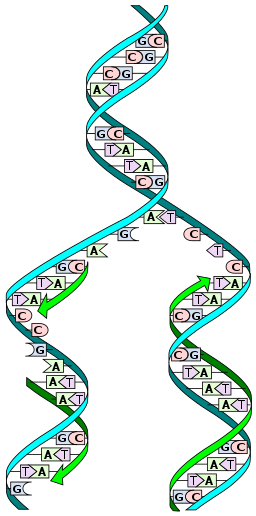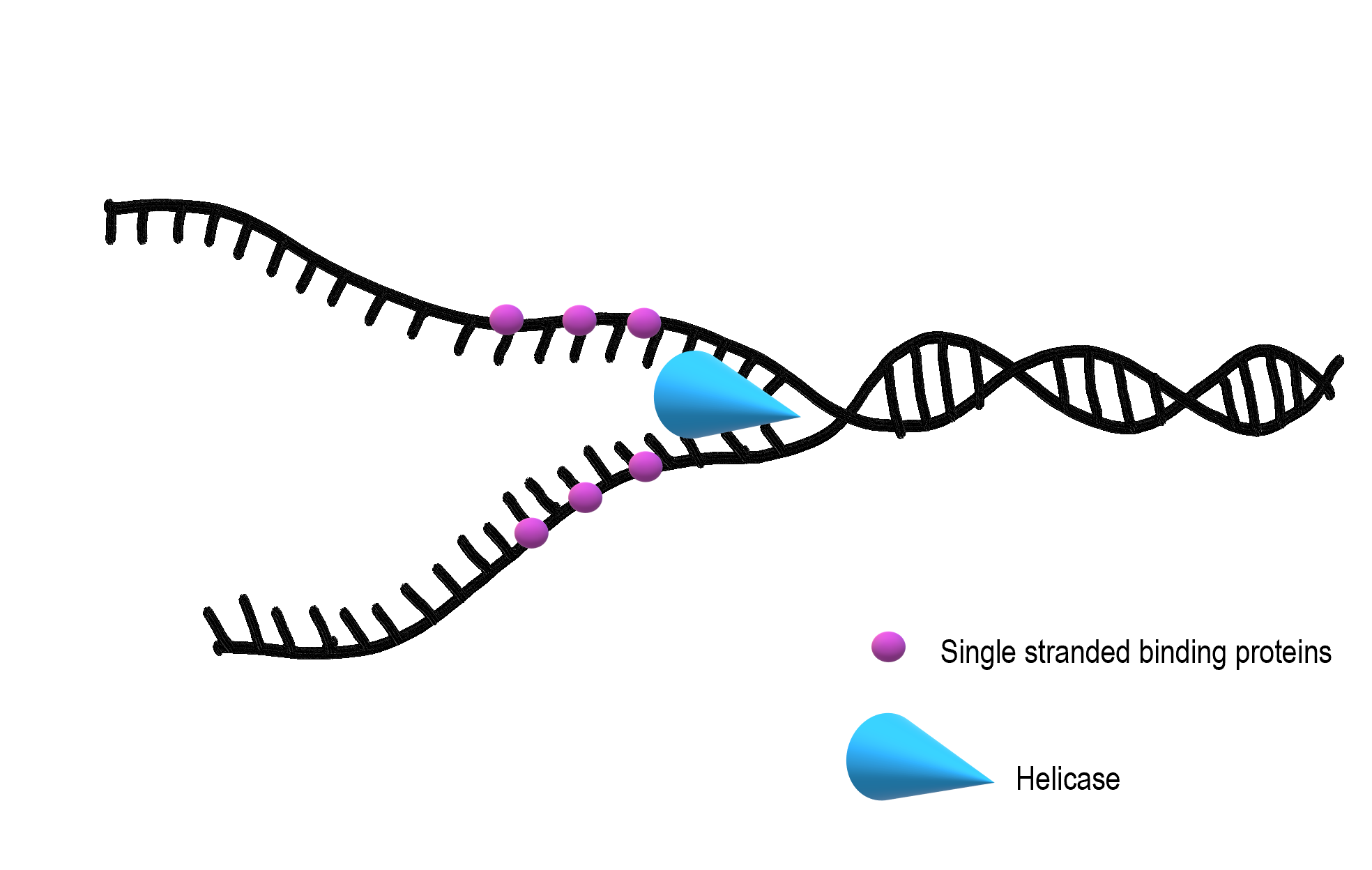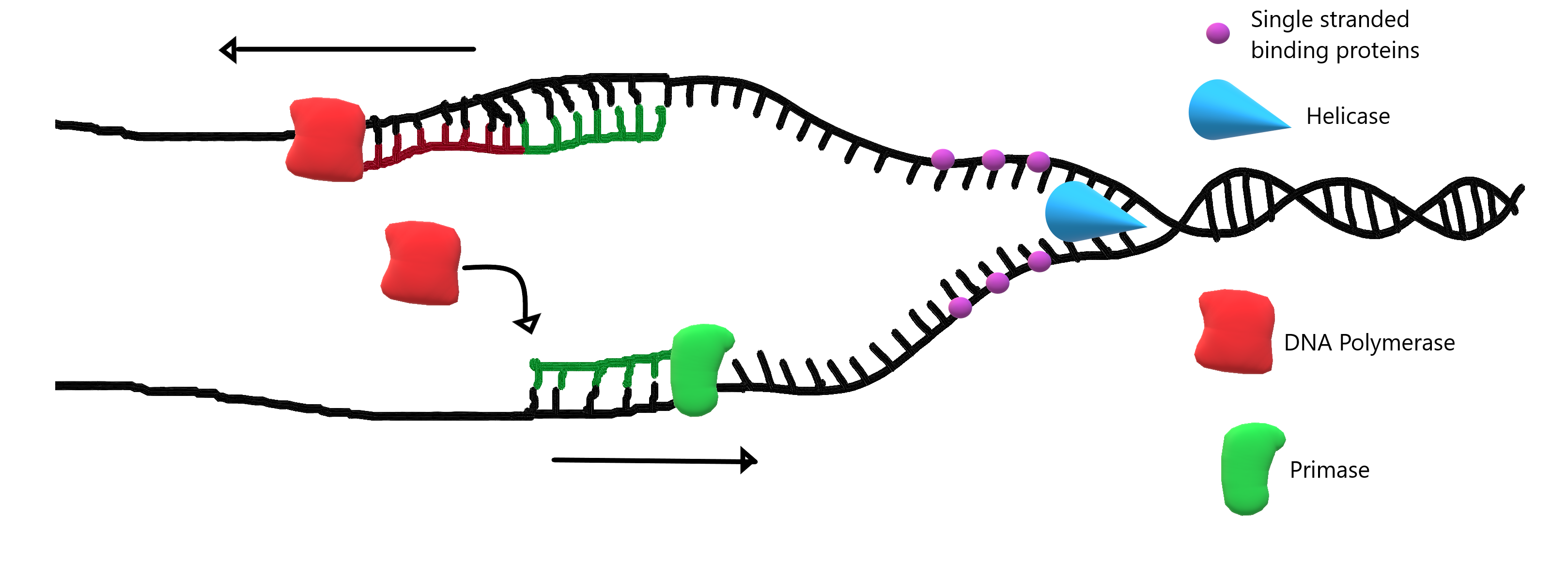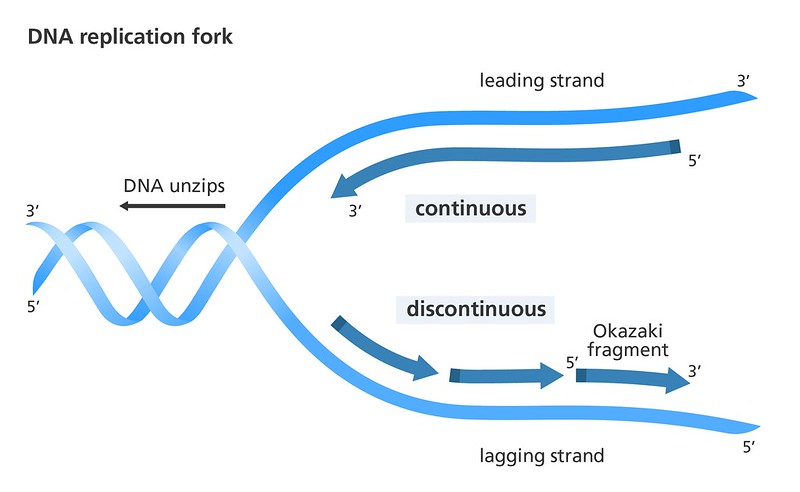5.11 Genetics of Inheritance
Created by: CK-12/Adapted by Christine Miller

Like Father, Like Son
This father-son duo share some similarities. The shape of their faces and their facial features look very similar. If you saw them together, you might well guess that they are father and son. People have long known that the characteristics of living things are similar between parents and their offspring. However, it wasn’t until the experiments of Gregor Mendel that scientists understood how those traits are inherited.
The Father of Genetics
Mendel did experiments with pea plants to show how traits such as seed shape and flower colour are inherited. Based on his research, he developed his two well known laws of inheritance: the law of segregation and the law of independent assortment. When Mendel died in 1884, his work was still virtually unknown. In 1900, three other researchers working independently came to the same conclusions that Mendel had drawn almost half a century earlier. Only then was Mendel’s work rediscovered.
Mendel knew nothing about genes, because they were discovered after his death. He did think, however, that some type of “factors” controlled traits, and that those “factors” were passed from parents to offspring. We now call these “factors” genes. Mendel's laws of inheritance, now expressed in terms of genes, form the basis of genetics, the science of heredity. For this reason, Mendel is often called the father of genetics.
The Language of Genetics
Today, we know that traits of organisms are controlled by genes on chromosomes. To talk about inheritance in terms of genes and chromosomes, you need to know the language of genetics. The terms below serve as a good starting point. They are illustrated in the figure that follows.
- A gene is the part of a chromosome that contains the genetic code for a given protein. For example, in pea plants, a given gene might code for flower colour.
- The position of a given gene on a chromosome is called its locus (plural, loci). A gene might be located near the center, or at one end or the other of a chromosome.
- A given gene may have different normal versions, which are called alleles. For example, in pea plants, there is a purple-flower allele (B) and a white-flower allele (b) for the flower-colour gene. Different alleles account for much of the variation in the traits of organisms, including people.
- In sexually reproducing organisms, each individual has two copies of each type of chromosome. Paired chromosomes of the same type are called homologous chromosomes. They are about the same size and shape, and they have all the same genes at the same loci.

Genotype
When sexual reproduction occurs, sex cells (called gametes) unite during fertilization to form a single cell called a zygote. The zygote inherits two of each type of chromosome, with one chromosome of each type coming from the father, and the other coming from the mother. Because homologous chromosomes have the same genes at the same loci, each individual also inherits two copies of each gene. The two copies may be the same allele or different alleles. The alleles an individual inherits for a given gene make up the individual’s genotype. As shown in Table 5.11.1, an organism with two of the same allele (for example, BB or bb) is called a homozygote. An organism with two different alleles (in this example, Bb) is called a heterozygote.
Table 5.11.1
Allele Combinations Associated With the Terms Homozygous and Heterozygous

Phenotype
The expression of an organism’s genotype is referred to as its phenotype, and it refers to the organism’s traits, such as purple or white flowers in pea plants. As you can see from Table 5.11.1, different genotypes may produce the same phenotype. In this example, both BB and Bb genotypes produce plants with the same phenotype, purple flowers. Why does this happen? In a Bb heterozygote, only the B allele is expressed, so the b allele doesn’t influence the phenotype. In general, when only one of two alleles is expressed in the phenotype, the expressed allele is called dominant, and the allele that isn’t expressed is called recessive.
The terms dominant and recessive may also be used to refer to phenotypic traits. For example, purple flower colour in pea plants is a dominant trait. It shows up in the phenotype whenever a plant inherits even one dominant allele for the trait. Similarly, white flower colour is a recessive trait. Like other recessive traits, it shows up in the phenotype only when a plant inherits two recessive alleles for the trait.
5.11 Summary
- Mendel’s laws of inheritance, now expressed in terms of genes, form the basis of genetics, which is the science of heredity. This is why Mendel is often called the father of genetics.
- A gene is the part of a chromosome that codes for a given protein. The position of a gene on a chromosome is its locus. A given gene may have different versions, called alleles. Paired chromosomes of the same type are called homologous chromosomes. They have the same size and shape, and they have the same genes at the same loci.
- The alleles an individual inherits for a given gene make up the individual’s genotype. An organism with two of the same allele is called a homozygote, and an individual with two different alleles is called a heterozygote.
- The expression of an organism’s genotype is referred to as its phenotype. A dominant allele is always expressed in the phenotype, even when just one dominant allele has been inherited. A recessive allele is expressed in the phenotype only when two recessive alleles have been inherited.
5.11 Review Questions
- Define genetics.
- Why is Gregor Mendel called the father of genetics if genes were not discovered until after his death?
-
- Imagine that there are two alleles, R and r, for a given gene. R is dominant to r. Answer the following questions about this gene:
- What are the possible homozygous and heterozygous genotypes?
- Which genotype or genotypes express the dominant R phenotype? Explain your answer.
- Are R and r on different loci? Why or why not?
- Can R and r be on the same exact chromosome? Why or why not? If not, where are they located?
5.11 Explore More
Alleles and Genes, Amoeba Sisters, 2018.
Genotypes and Phenotypes, Bozeman Science, 2011.
Attributions
Figure 5.11.1
Father holding his baby boy with matching haircut [photo] by Kelly Sikkema on Unsplash is used under the Unsplash License (https://unsplash.com/license).
Figure 5.11.2
Chromosome, Gene, Locus, and Allele by CK-12 Foundation is used under a CC BY-NC 3.0 (https://creativecommons.org/licenses/by-nc/3.0/) license.
 ©CK-12 Foundation Licensed under
©CK-12 Foundation Licensed under ![]() • Terms of Use • Attribution
• Terms of Use • Attribution
Table 5.11.1
Allele Combinations Associated With the Terms Homozygous and Heterozygous by Christine Miller is released into the public domain (https://en.wikipedia.org/wiki/Public_domain).
References
Amoeba Sisters. (2018, February 1). Alleles and genes. YouTube. https://www.youtube.com/watch?v=pv3Kj0UjiLE&feature=youtu.be
Bozeman Science. (2011, August 4). Genotypes and phenotypes. YouTube. https://www.youtube.com/watch?v=OaovnS7BAoc&feature=youtu.be
Brainard, J/ CK-12 Foundation. (2016). Figure 2 Chromosome, gene, locus, and allele [digital image]. In CK-12 College Human Biology (Section 5.10) [online Flexbook]. CK12.org. https://www.ck12.org/book/ck-12-human-biology/section/5.9/
The smallest particle of an element that still has the properties of that element.

By Christine Miller
DNA Replication: Overview
DNA replication is required for the growth or replication of an organism. You started as one single cell and are now made up of approximately 37 trillion cells! Each and every one of these cells contains the exact same copy of DNA, which originated from the first cell that was you. How did you get from one set of DNA, to 37 million sets, one for each cell? Through DNA replication.
Knowledge of DNA’s structure helped scientists understand DNA replication, the process by which DNA is copied. It occurs during the synthesis (S) phase of the eukaryotic cell cycle. DNA must be copied so that each new daughter cell will have a complete set of chromosomes after cell division occurs.
DNA replication is referred to as "semi-conservative". What this means is when a strand of DNA is replicated, each of the two original strands acts as a template for a new complementary strand. When the replication process is complete, there are two identical sets of DNA, each containing one of the original strands of DNA, and one newly synthesized strand.
DNA replication involves a certain sequence of events. For each event, there is a specific enzyme which facilitates the process. There are four main enzymes that facilitate DNA replication: helicase, primase, DNA polymerase, and ligase.
DNA Replication: The Process
DNA replication begins when an enzyme called helicase unwinds, and unzips the DNA molecule. If you recall the structure of DNA, you may remember that it consists of two long strands of nucleotides held together by hydrogen bonds between complementary nitrogenous bases. This forms a ladder-like structure which is in a coiled shape. In order to start DNA replication, helicase needs to unwind the molecule and break apart the hydrogen bonds holding together complementary nitrogenous bases. This causes the two strands of DNA to separate.
Small molecules called single-stranded binding proteins (SSB) attach to the loose strands of DNA to keep them from re-forming the hydrogen bonds that helicase just broke apart.

Once the nitrogenous bases from the inside of the DNA molecule are exposed, the creation of a new, complementary strand can begin. DNA polymerase creates the new strand, but it needs some help in finding the correct place to begin, so primase lays down a short section of RNA primer (shown in green in Figure 5.4.3). Once this short section of primer is laid, DNA polymerase can bind to the DNA molecule and start connecting nucleotides in the correct order to match the sequence of nitrogenous bases on the template (original) strand.


If we think about the DNA molecule, we may remember that the two strands of DNA run antiparallel to one another. This means that in the sugar-phosphate backbone, one strand of the DNA has the sugar oriented in the "up" position, and the other strand has the phosphate oriented in the "up" position (see Figure 5.4.4). DNA polymerase is an enzyme which can only work in one direction on the DNA molecule. This means that one strand of DNA can be replicated in one long string, as DNA polymerase follows helicase as it unzips the DNA molecule. This strand is termed the "leading strand". The other strand, however, can only be replicated in small chunks since the DNA polymerase replicates in the opposite direction that helicase is unzipping. This strand is termed the "lagging strand". These small chunks of replicated DNA on the lagging strand are called Okazaki fragments.
Take a look at Figure 5.4.5 and find the Okazaki fragments, the leading strand and the lagging strand.

Once DNA polymerase has replicated the DNA, a third enzyme called ligase completes the final stage of DNA replication, which is repairing the sugar-phosphate backbone. This connects the gaps in the backbone between Okazaki fragments. Once this is complete, the DNA coils back into its classic double helix structure.
Semi-Conservative Replication
When DNA replication is complete, there are two identical sets of double stranded DNA, each with one strand from the original, template, DNA molecule, and one strand that was newly synthesized during the DNA replication process. Because each new set of DNA contains one old and one new strand, we describe DNA as being semi-conservative.
Watch this video for a great overview of DNA replication:
https://www.youtube.com/watch?v=Qqe4thU-os8
DNA Replication (Updated), Amoeba Sisters, 2019.
5.4 Summary
- DNA replication requires the action of three main enzymes each with their own specific role:
- Helicase unzips and unwinds the DNA molecule.
- DNA polymerase creates a new complementary strand of DNA on each of the originals halves that were separated by helicase. New nucleotides are added through complementary base pairing: A pairs with T, and C with G.
- Ligase repairs gaps in the sugar-phosphate backbone between Okazaki fragments.
- DNA replication is semi-conservative because each daughter molecule contains one strand from the parent molecule and one new complementary strand.
5.4 Review Questions
2. Why are Okazaki fragments formed?
- Because helicase only unzips DNA in one direction.
- Because DNA is in a double helix.
- Because DNA polymerase only replicates DNA in one direction.
- Because DNA replication is semi-conservative.
3. Drag and drop to label the diagram.
5.4 Explore More
https://www.youtube.com/watch?v=TNKWgcFPHqw
DNA replication - 3D, yourgenome, 2015.
Attributions
Figure 5.4.1
DNA_replication_split.svg by Madprime on Wikimedia Commons is used under a CC0 1.0
Public Domain Dedication license (https://creativecommons.org/publicdomain/zero/1.0/deed.en).
Figure 5.4.2
Helicase and single stranded binding proteins (1) by Christine Miller is used under a CC BY 4.0 (https://creativecommons.org/licenses/by/4.0/) license.
Figure 5.4.3
DNA polymerase and primase by Christine Miller is used under a CC BY 4.0 (https://creativecommons.org/licenses/by/4.0/) license.
Figure 5.4.4
DNA strands run antiparallel by Christine Miller is used under a CC BY 4.0 (https://creativecommons.org/licenses/by/4.0/) license.
Figure 5.4.5
Leading and lagging strand/ DNA Replication/ by yourgenome on Flickr is used under a CC BY-NC-SA 2.0 (https://creativecommons.org/licenses/by-nc-sa/2.0/) license.
References
Amoeba Sisters. (2019, June 28). DNA replication (Updated). YouTube. https://www.youtube.com/watch?v=Qqe4thU-os8&feature=youtu.be
Betts, J. G., Young, K.A., Wise, J.A., Johnson, E., Poe, B., Kruse, D.H., Korol, O., Johnson, J.E., Womble, M., DeSaix, P. (2013, April 25). Figure 3.24 DNA Replication [digital image]. In Anatomy and Physiology. OpenStax. https://openstax.org/books/anatomy-and-physiology/pages/3-3-the-nucleus-and-dna-replication CC BY 4.0 (https://creativecommons.org/licenses/by/4.0/)
yourgenome. (2015, June 26). DNA replication - 3D. YouTube. https://www.youtube.com/watch?v=TNKWgcFPHqw&feature=youtu.be

